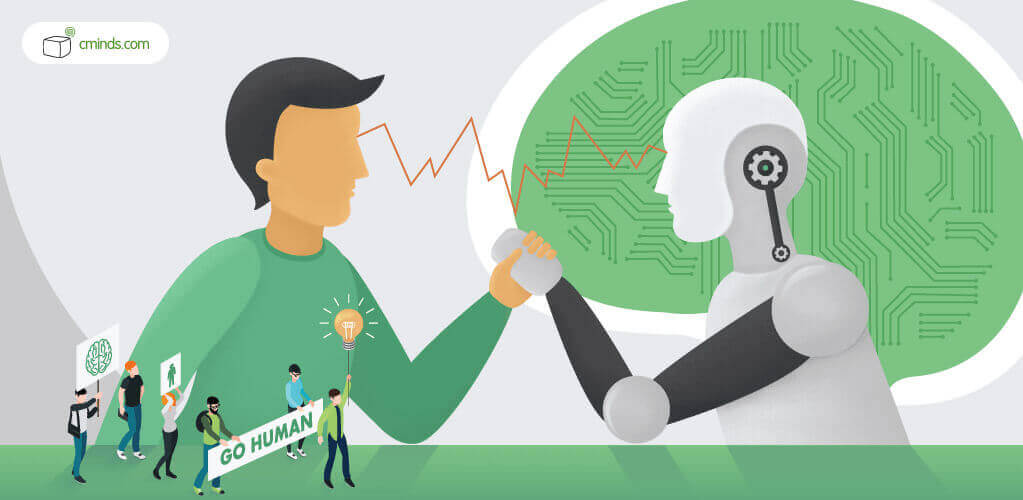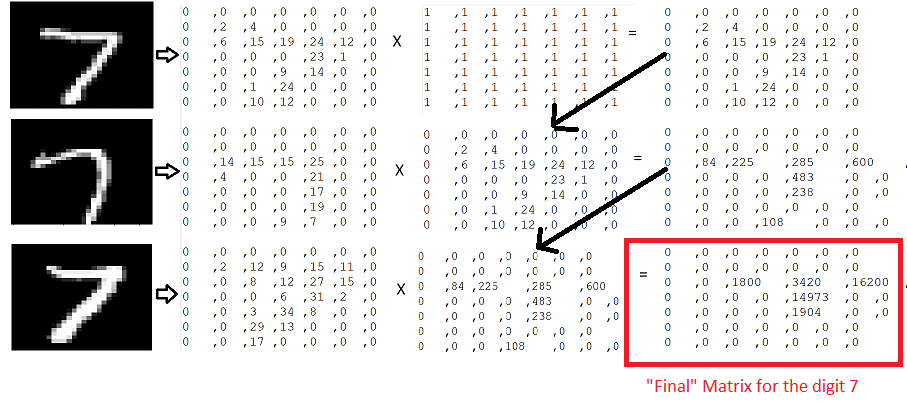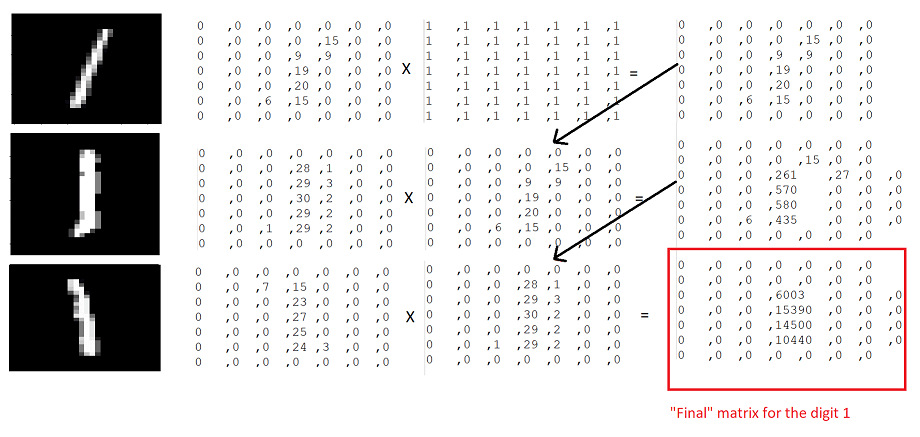In this blog series, we explain artificial intelligence in terms everyone can understand.

The purpose of the series is to explain artificial intelligence in a way that even non-technical readers can understand. We’re covering questions like: What is Artificial Intelligence (A.I.)? How does it work? What are the limitations of A.I.? And just as importantly, how can we prepare for A.I within our organization?
Everyone’s excited (and a little frightened) by the current revolution of artificial intelligence (A.I.).
Our world is about to go through massive changes. Virtual doctors will be able to analyze our X-ray images, robots will inhabit our houses, and autonomous cars will soon drive us down the streets.
Yes, this is all coming our way. However, we’re not quite there yet, and to better understand why, let’s look at some of the limitations holding artificial intelligence back and the costly truth behind its implementation.
April 2025 Offer – For a Limited Time Only:
Get WordPress 99+ Plugins Mega Bundle for 15% off! Don’t miss out!
The Truth Behind Artificial Intelligence
The Difference between Human Intelligence and Artificial Intelligence

In reality, there is no true “intelligence” behind modern artificial intelligence. Our computers are not going to start “thinking” anytime soon.
But if computers aren’t thinking, then what are they doing? The answer is still only ‘computing’, but with A.I. enhancing computing power in incredible ways that we’ve never seen before.
Artificial intelligent is at a point where it’s capable of recognizing the same conclusions that humans do when digging through data, images, and writing, but at exponentially faster rates. More and more often, we’re finding that A.I. outperforms humans in a variety of ways.
Still, this all comes from computations which involved linear algebra, calculus, and other math-related terms many of us would prefer not to think about.
Let us give you one quick example: A sentence with 13 words can easily have over 3 trillion different interpreted meanings. Humans would never be able to comprehend most of those meanings, simply because our brain ignores 99.9999999999% of the possibilities. Instead, we only focus on a few related to the context of our situations to quickly determine what our conversational partner really means.
On the contrary, a computer has to go over all 3 trillion possibilities to assess which meaning best matches the intention of the speaker. We help software do this correctly by supplying it with additional statistics and guidance on the words and phrases. But our software has really no idea what the word “cloud” means, and why we use it for discussions about both weather patterns and computers systems.
What is Machine Learning?

The hottest trend in artificial intelligence is machine learning and its subsection, deep learning.
Both use mathematics, statistics, geometrics, and other means to create a “model” with which we analyze data. For example, autonomous cars and personal assistants like Alexa are all powered by machine learning and deep learning.
So how do they work?
Let’s say we have two categories of news: Sports and Music. With machine learning we can accurately classify which articles fit into which category as they come out, without the assistance of human intervention.
This is done by ‘teaching’ programs to search through each article for words like basketball, tennis, football, or soccer, and then classify those articles as Sports. If the article contains words like guitar, melody, or piano, it will classify those articles as Music.
You get the idea.
Machine learning and deep learning are doing just this, but in a completely different, albeit sophisticated and flexible, method. What machine learning does is count words, phrases, and other patterns by applying models based on mathematics, geometrics, statistics, and more to determine the intended meaning of the text.
The “Machine” in Machine Learning
So we’ve seen how Artificial Intelligence (A.I.) is mostly powered by machine learning and deep learning models, making calculation through acquired data.
To better understand the “machine” aspect of machine learning, think of creating a model for machine learning like you would for building features into any physical machine. You need to build (or program) specific parts for each task. Just as a machine that’s built to produce screws won’t make jars, Artificial Intelligence (A.I.) designed to analyze animals in images can’t determine which digit appears in the image, it will need to be trained for this specific task.
Human brain vs. Machine brain

To highlight how this is different from our human intelligence, think of how people learn from a foundation of information and then infer more knowledge on their own.
When children learn to distinguish dogs from cats, they’re also learning that different furry looking creatures are also different species of animals.
So later, when those children see a squirrel for the first time, due to their real intelligence, they’ll most likely classify the Squirrel as a new animal, and attribute additional meaning behind that classification.
By comparison, A.I. is still far behind humans in terms of “learning”.
Machine learning doesn’t learn like a child does because it only knows how to recognize the words, phrases, and associations it was specifically built to analyze. It may be able to recognize a cat from a dog, but unless otherwise taught, squirrels will appear just the same as raccoons, frogs, or school buses, to the Artificial Intelligence (A.I.) It only sees what it has learned how to see.
When considering how the knowledge of machine learning is constructed in this piece-by-piece fashion, the machine half of the term becomes pretty appropriate.
How Neural Networks Operate

Neural networks are the most advanced groups of algorithms within the realm of Artificial Intelligence. The name even suggests that they imitate the human brain, but that’s not really the case.
Neural networks rely on tagged data, such as example images provided to the system, where it learns to identify the specific parts of the images as digits.
Next, we turn the images into a numeric matrix (numbers instead of pixels). Through a series of mathematical operations, we turn the matrices of many tagged images into a final matrix which is what becomes the model. Now we can use the model’s matrix to multiply it within new, previously unseen, images and find the similarities we’re looking for.
This, of course, is nothing like the human intelligence. We all understand there are no linear algebra matrices operating within our brains.
A very simplified example of what happens in Neural Network matrices with multiplication for digits 1 and 7, using only 3 images for each. You can easily notice in the chart below that they indicate specific, different “neurons”.

It’s amazing how the 7 matrix knows to ignore all the lower parts of the data, and concentrate on the 7 “curve” point with the score 16,200 and 14,973. From here forward, the Neural Network will use the curve area to distinguish 7 from other digits. When you consider that level of precision was reached after only 3 images, this demonstrates an impressive rate of learning.

Identifying the digit “1” based on three images
Artificial Intelligence Can’t Generalize
Understanding that Neural Networks are just matrices of numbers, you see how an Artificial Intelligence (A.I.) system taught to differentiate between cat’s and dog’s cannot learn to recognize anything else.
This is, indeed, the main limitation of A.I:just like with physical machines, we need to create new parts for each and any problem we want to solve.
This means that:
- Artificial Intelligence is costly. In most other areas, we can generalize or re-use developed components to save costs. With Artificial Intelligence, we are very limited, and previously made components are, more than often not, useless.
- Artificial Intelligence is sensitive to data changes. If people decide to change the way they draw digits, the previously mentioned Neural Network model will fail to recognize the shapes of the numbers–a task most humans wouldn’t have trouble with.
For example, note the Arabic digits below. They were here first, and most humans can easily and intuitively use them–even if they’ve never seen them before. Neural Networks, on the other hand, would need to be re-trained with a new model to discern that those symbols are anything at all.

How CreativeMinds can Help
The CreativeMinds data science team has experts in Data Analysis and Natural Language Processing.
We serve small and medium size companies, and explore together their data and product opportunities. We then design the right solution for their needs, and implement them using tailor made software with included APIs utilization through best industry practices.


